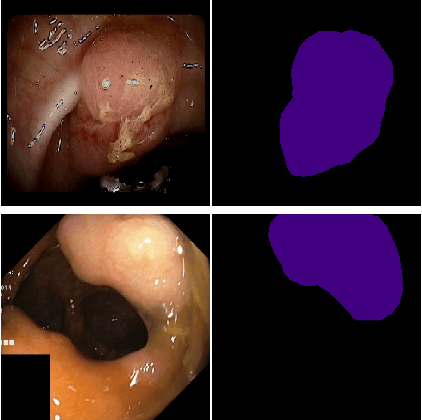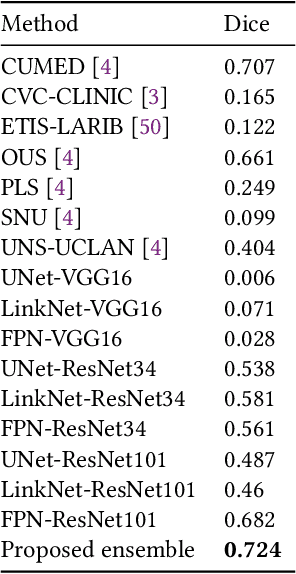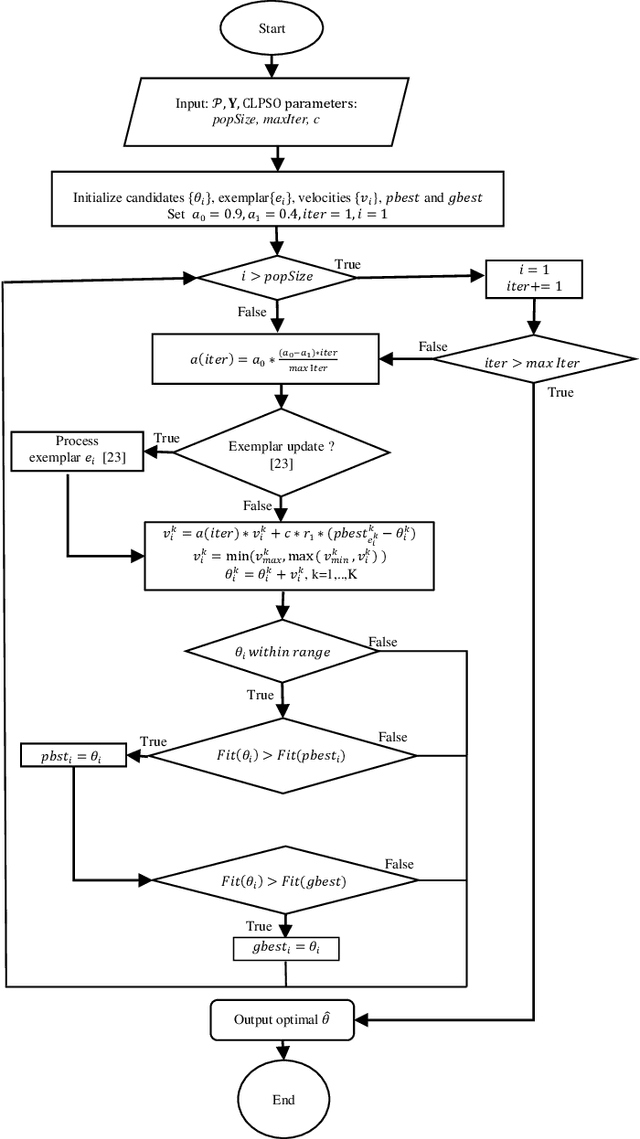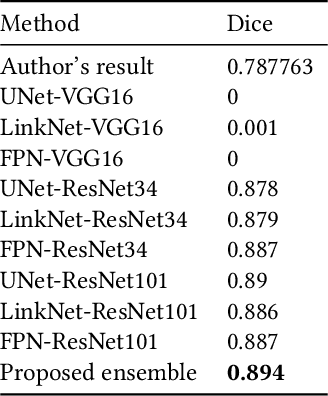Ensemble Learning based on Classifier Prediction Confidence and Comprehensive Learning Particle Swarm Optimisation for polyp localisation
Paper and Code
Apr 10, 2021



Colorectal cancer (CRC) is the first cause of death in many countries. CRC originates from a small clump of cells on the lining of the colon called polyps, which over time might grow and become malignant. Early detection and removal of polyps are therefore necessary for the prevention of colon cancer. In this paper, we introduce an ensemble of medical polyp segmentation algorithms. Based on an observation that different segmentation algorithms will perform well on different subsets of examples because of the nature and size of training sets they have been exposed to and because of method-intrinsic factors, we propose to measure the confidence in the prediction of each algorithm and then use an associate threshold to determine whether the confidence is acceptable or not. An algorithm is selected for the ensemble if the confidence is below its associate threshold. The optimal threshold for each segmentation algorithm is found by using Comprehensive Learning Particle Swarm Optimization (CLPSO), a swarm intelligence algorithm. The Dice coefficient, a popular performance metric for image segmentation, is used as the fitness criteria. Experimental results on two polyp segmentation datasets MICCAI2015 and Kvasir-SEG confirm that our ensemble achieves better results compared to some well-known segmentation algorithms.
 Add to Chrome
Add to Chrome Add to Firefox
Add to Firefox Add to Edge
Add to Edge